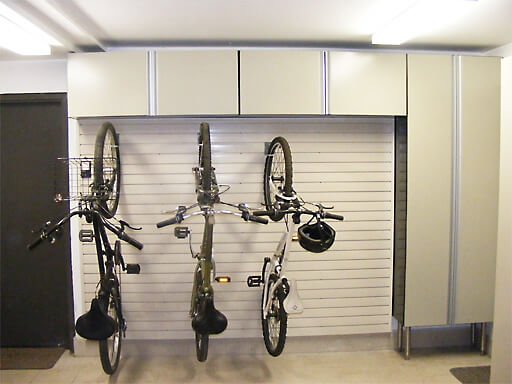 Recreational and utilitarian bicycling is experiencing a resurgence in cities across North America, including Toronto. The growing interest in cycling has prompted events like Bike Month—a month-long celebration of cycling in Greater Toronto and Hamilton that kicked off on May 30th.
Recreational and utilitarian bicycling is experiencing a resurgence in cities across North America, including Toronto. The growing interest in cycling has prompted events like Bike Month—a month-long celebration of cycling in Greater Toronto and Hamilton that kicked off on May 30th.
Cities worldwide are being forced to re-examine their infrastructure. Biking enthusiasts and motorists are demanding more bike lanes in their communities and on main thoroughfares, prompting Toronto to develop a 10-year plan to expand its cycling network.
Why has cycling become so popular? Because cycling offers numerous health and environmental benefits.
Health Benefits of Cycling
Cycling is a fun physical activity that offers countless health benefits. Yet, it is easily-accessible to people of all ages and fitness levels.
Most of us learned to ride a bike as children. Once learned, it’s a skill you never forget. This makes cycling ideal for children and adults. Based on the type of bicycle and the course chosen, cycling can be relaxed and easy or high-energy and intense—making it suitable for everyone from beginners to advanced riders.
Cycling engages all the major muscle groups, while putting very little strain on joints and muscles. The heart and lungs also get a good workout, improving cardiovascular health. Continued cycling increases stamina and strength. In just a few hours a week, this low-impact cardiovascular exercise can improve health, lower stress levels and reduce feelings of anxiety. Regular cycling can also serve a vital role in an overall weight loss or healthy weight maintenance regimen.
As Westerners, we spend hours seated at desks, on the couch in front of the television and in our cars while commuting. A sedentary lifestyle puts increased strain on joints and muscles employed while sitting, causes unused muscles to shorten and encourages stiffness in underused joints. Utilitarian bicycle riding—for transportation—converts the sedentary commute to local shops or work into active transportation which promotes good health. Utilitarian cycling also benefits the health of the environment.
Environmental Benefits of Cycling
 Nearly 30% of Canadian greenhouse gas emissions stem from the transportation of people and goods. Therefore, reducing transportation emissions has become a key part of Canada’s goal to diminish greenhouse emissions by 30% by 2030. Active transportation—walking and cycling—can help us get closer to that goal.
Nearly 30% of Canadian greenhouse gas emissions stem from the transportation of people and goods. Therefore, reducing transportation emissions has become a key part of Canada’s goal to diminish greenhouse emissions by 30% by 2030. Active transportation—walking and cycling—can help us get closer to that goal.
Motor vehicles are a major contributor to smog—an unhealthy mixture of air pollutants and other particles which can be irritating to the lungs and aggravate various health issues, like asthma. When we opt for active transportation like cycling, as opposed to starting up our vehicles, we help reduce smog and greenhouse gas emissions.
There is a growing push for walkable communities as a strategy for reducing the burden placed on our environment. Walkable communities offer the perfect setting for recreational and active transportation biking.
Perhaps you’re ready to embrace Canada’s rapidly expanding cycling culture, but an overflowing garage poses a serious bicycle storage dilemma. Fortunately, there are a variety of smart, sleek garage storage options for your bicycles and cycling equipment.
Bike and Cycling Equipment Garage Storage Options
For many homeowners, storing the family bicycles in the garage becomes an either/or situation. Either the bikes get stored in the garage or the vehicles do. When improperly stored, bicycles stored in the garage can scratch or dent vehicles or be accidentally run over. The bike might also be damaged if it falls over.
Serious bicycling enthusiasts make a substantial investment for bicycles and cycling equipment. Investing in a workable garage bicycle storage option will protect your investment in your bicycle, your vehicle and your garage. With a wide variety of creative garage bicycle storage options available, it is easy to find the one that fits your needs and budget.
- Schoolyard style bike racks are easily placed near the back garage wall, allowing bicycles to be parked in a neat, orderly fashion. This style of rack is easily put in place. However, it has a large footprint, so it is often favored by those who use all or part of the garage for bike storage during summer months.
- Horizontal wall bike storage relies on a wall organizational system—sturdy, durable panels that work with complementary hooks, shelves and baskets to store a range of items. Bikes are stored flat against the wall from hooks placed at the desired height. This makes it relatively easy for each family member to remove his or her own bike.
- Vertical wall storage also works in tandem with a wall organizational system, but bikes are stored vertically. The bikes protrude further from the wall. However, more bicycles can be stored in the same space. Many find this storage option aesthetically pleasing. However, it can be more difficult for small children or those with limited arm strength to hang and retrieve bikes from the wall.
- Overhead bike pulley systems come in both manual and motorized varieties. This storage option makes use of wasted, overhead space and reclaims valuable floor space. Depending on the placement of the rack, vehicles may need to be moved to store and retrieve bikes.
- Baskets, hooks and shelves can be hung at various points along the wall organization system panels to store bicycle helmets, water bottles and other equipment.
For a more in-depth look at each style and tips on selecting the right storage option for you, review Reclaim Your Garage with Creative Bike Storage Solutions.
Are you ready to embrace the Canadian cycling culture? Learn the cycling laws and safety rules, check out an ongoing list of Ontario cycling events, then discover the top cycling paths in the Greater Toronto area. If you’re in the market for a new bicycle, save the date for the Toronto International Bicycle Show’s Fall Blowout Sale on October 15th.
Contact Garage Tailors Garage to find the garage bicycle storage option that’s right for you.




 We have become a nation of bike riders. There has been a consistent increase in the number of cyclists in the country since the beginning of the millennium. It is not just the twenty-somethings either. People of all ages are getting out and about on their bikes. Whether for leisure, commuting, fitness or sport everyone from high school students to busy executives to retired seniors are strapping on helmets and pushing pedals.
We have become a nation of bike riders. There has been a consistent increase in the number of cyclists in the country since the beginning of the millennium. It is not just the twenty-somethings either. People of all ages are getting out and about on their bikes. Whether for leisure, commuting, fitness or sport everyone from high school students to busy executives to retired seniors are strapping on helmets and pushing pedals.
 Another option is to park one vehicle outside and utilize that space for the bike rack during the bike riding season.
Another option is to park one vehicle outside and utilize that space for the bike rack during the bike riding season. This requires the installation of strong, durable
This requires the installation of strong, durable  As with horizontal wall storage, storing a bike on the wall vertically requires lifting the bike. However, since vertical wall storage requires that the front tire be hung on a hook, lifting the bicycle this way is physically challenging.
As with horizontal wall storage, storing a bike on the wall vertically requires lifting the bike. However, since vertical wall storage requires that the front tire be hung on a hook, lifting the bicycle this way is physically challenging. Look up for the third option. The area overhead in a garage is often wasted space, but it has lots of potential. However, since it isn’t easily accessed, overhead space is typically reserved for storing items not frequently used.
Look up for the third option. The area overhead in a garage is often wasted space, but it has lots of potential. However, since it isn’t easily accessed, overhead space is typically reserved for storing items not frequently used. Overhead bike storage is an excellent use of wasted overhead space. However, in order to install the five-bike overhead pulley system, the ceiling height must accommodate the height of the bicycles plus allow for 60-inches of clearance. Since this type of overhead pulley system requires a high ceiling, it isn’t right for every garage.
Overhead bike storage is an excellent use of wasted overhead space. However, in order to install the five-bike overhead pulley system, the ceiling height must accommodate the height of the bicycles plus allow for 60-inches of clearance. Since this type of overhead pulley system requires a high ceiling, it isn’t right for every garage.